Today, bigger is widely regarded as better. But was this always the case? This article sheds some light on how the Western culture changed in its phallic preferences. Over the past few decades, pornography has played a role in the infatuation of inflated sizes. But in ancient times, men were intentionally portrayed with small genitals. Why was this the case? The story starts all the way back in ancient Greece…
Classical Preferences in Penis Size
If you have ever walked around a museum of classical work (meaning from ancient Greece or Rome) or if you have ever seen a photo of Michelangelo’s David, you may have noticed that male genitals are depicted with a smaller than average size. You are not mistaken. Greeks preferred their heroes to have small members. This preference was then transmitted through Roman, Christian, and ultimately Renaissance art .
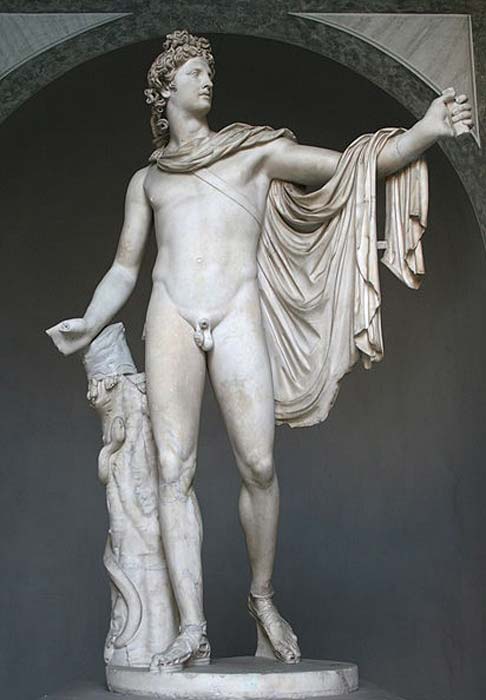
Apollo Belvedere. Roman copy after a Greek bronze original of 330–320 BC. attributed to Leochares. Found in the late 15th century. (Jean-Pol GRANDMONT/ CC BY SA 3.0 )
It may sound like a silly thing to think about; maybe a tour guide or teacher scolded you for even asking about it. But academics have deeply considered the penis size of classical works of art. For instance, a study entitled “Penile representations in ancient Greek art” was conducted in 2013 by the University of Athens and published in the US National Library of Medicine.
The study’s stated methods were “The examination of a great number of penile representations from the ancient Greek pottery and sculpture and the review of the ancient theater plays (satiric dramas and comedies)” (Rempelakos, Tsiamis, and Poulakou-Rebelakou, 2013). So leave your giggles aside – this is serious stuff.

Laocoön and his sons , also known as the Laocoön Group. Marble, copy after a Hellenistic original from ca. 200 BC. Found in the Baths of Trajan, 1506. ( Public Domain )
Anatomical Influences
There are a couple of important things to bear in mind. First, as art historian Ellen Oredsson notes in discussing penis size in classical sculptures, “they’re flaccid. If you compare their size to most flaccid male penises, they are actually not significantly smaller than real-life penises tend to be.” (Oredsson, 2016)
Second, as the study mentioned above explains, “It is noteworthy that many of these images belong to athletes during or immediately after hard exercise with the penis shrunk” (Rempelakos, Tsiamis, and Poulakou-Rebelakou, 2013). Finally, with regards to Michelangelo’s David, a 2005 study by two Florentine doctors “offer a scientific explanation: the poor chap was shriveled by the threat of mortal danger. Michelangelo’s intention was to depict David as he confronted Goliath. What the new study shows is that every anatomical detail – right down to the shaping of the muscles in his forehead – is consistent with the combined effects of fear, tension, and aggression.” (Hooper, 2005)
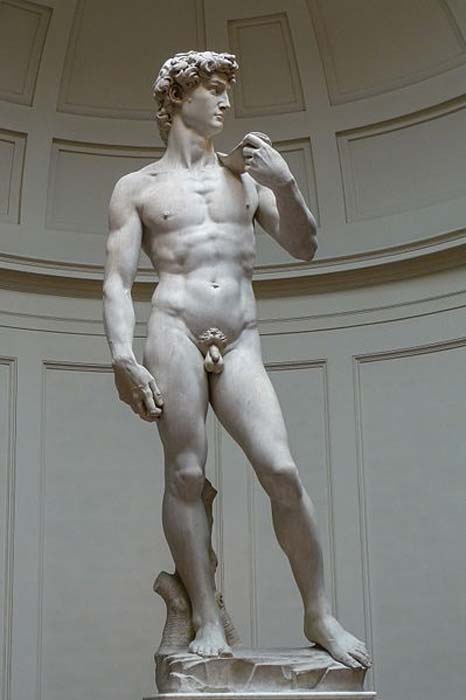
Michelangelo’s David, 1501-1504, Galleria dell’Accademia (Florence). (Jörg Bittner Unna/ CC BY 3.0 )
Social Factors in Phallic Portrayals
However, there are plenty of sculptures depicting men and gods who are not athletes and who are not scared. So why are these guys shown with small sex organs? The answer turns out to be a matter of cultural taste. As mentioned above, the Greeks preferred to see their heroes with small penises. This preference derives from several factors.
The ancient Greek ideal man was not a lustful lover but a wise public servant. “Greeks associated small and non-erect penises with moderation, which was one of the key virtues that formed their view of ideal masculinity,” explains classics professor Andrew Lear, who has taught at Harvard, Columbia, and NYU. “There is the contrast between the small, non-erect penises of ideal men (heroes, gods, nude athletes etc.) and the over-size, erect penises of Satyrs (mythic half-goat-men, who are drunkards and wildly lustful) and various non-ideal men. Decrepit, elderly men, for instance, often have large penises.” (Goldhill, 2016)
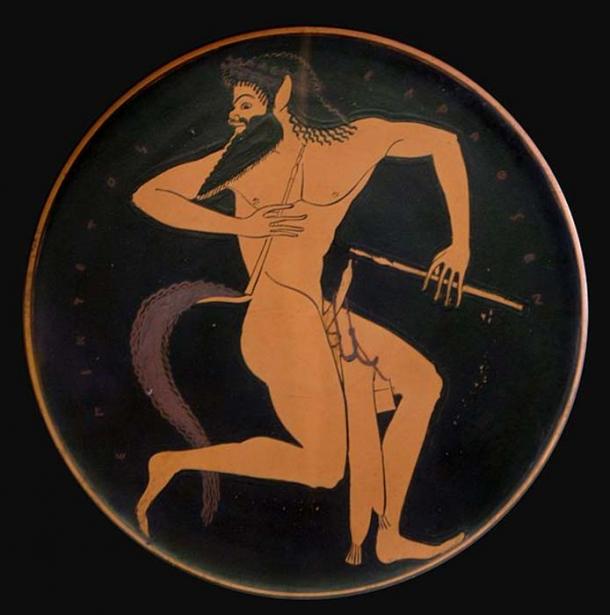
There is the contrast between the small, non-erect penises of ideal men (heroes, gods, nude athletes etc.) and the over-size, erect penises of Satyrs (mythic half-goat-men, who are drunkards and wildly lustful) and various non-ideal men. ( Public Domain )
Indeed, there are many sculptures from this time that show large penises, but they are not of Zeus. For example, one god who is always depicted as ‘well-endowed’ by modern standards is Priapus, god of fertility, protector of livestock and gardens. Priapus is the son of Aphrodite (goddess of beauty) and Dionysus (god of wine).
While still in the womb, Priapus was cursed by Hera (wife of Zeus) to be forever impotent, foul-minded, and ugly (she cursed him because Paris choose Aphrodite, see The Iliad ). He was so grotesque that the other gods refused to allow him to live with them. So he was raised by lustful satyrs.
Forever filled with lust, there are several myths in which Priapus tries to rape sleeping goddesses, nymphs, and maidens. But each time he loses his erection before he can. He is a ridiculous figure and always portrayed with an enormous penis. As an interesting side note, the medical condition known as priapism was named after Priapus. It is when an unwanted erection lasts for hours.
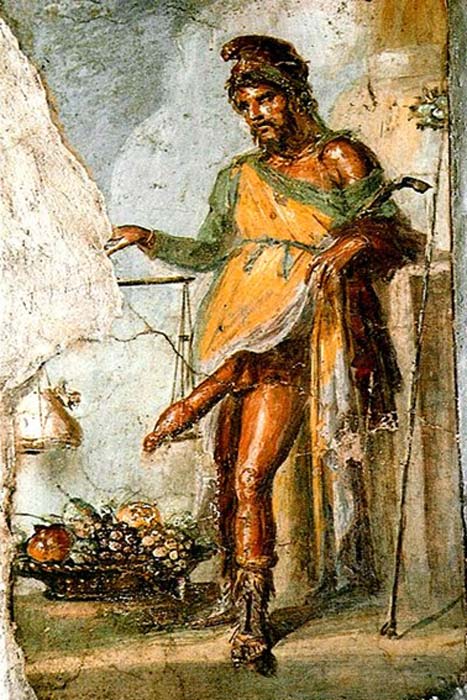
Fresco of Priapus, Casa dei Vettii, Pompeii. Depicted weighing his enormous erect penis against a bag of gold. ( Public Domain )
In addition to mythical creatures, ancient Greeks saw other negative examples of large penises: the barbarians. In addition to being foolish, a large penis indicated a person was uncivilized. Remember, at this point in history Greece was something of an island of civilization amid more primitive hunter-gather tribes who frequently tried to raid Greek towns.
For better or worse, a barbarian stereotype of crazed men ruled by their lustful urges emerged. “Many barbarians surrounding Greece whom had raided and warred with Greece had demonstrated their penis worship and such practices were therefore a sign of barbarism and cultural vacuum in the eyes of the Greeks” (Admin, 2016). Whether a fool or a barbarian, large penises were considered signs of a man ruled by desire (not rationality) and were associated with uncivilized, animal-like behaviors.
A young Greek would not want to end up like Priapus and definitely would not want people to think he was affiliated with barbarians. As Ellen Odredsson wrote, “the ideal Greek man was rational, intellectual and authoritative. He may still have had a lot of sex, but this was unrelated to his penis size, and his small penis allowed him to remain coolly logical” (Oredsson, 2016)
Moreover, the most ideal of all human beings was the male youth (Greek men did not prefer women ). The prepubescent male was considered beautiful, innocent, and full of potential because he had not yet ‘burst forth.’ For those who don’t know, the male genitalia increase in size during puberty. Therefore, “the smaller your penis is the closer you are to the ideal and the more attractive you’re considered” (Admin, 2016).
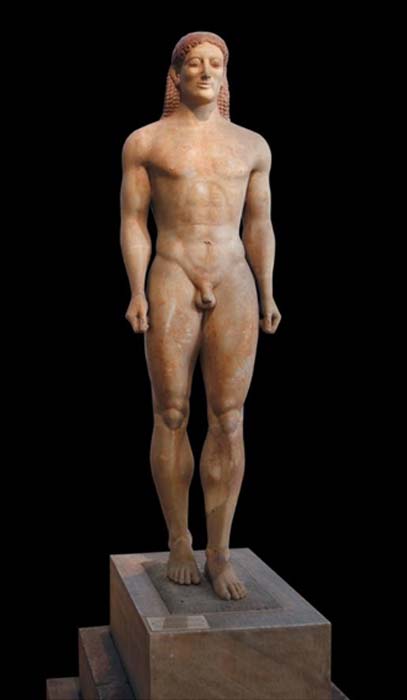
Anavysos Kouros, c. 530 BC. (Steven Zucker/ CC BY NC SA 2.0 )
Proportionality was sought instead of size. As with the arms, legs, and face, Greek sculpture made a radical departure from previous cultural artwork (think Egyptian and Sumerian) because the Greek artists tried to capture man as he really was, with all the curves and proportionate sizes that entailed. Remember, “Greek men saw each other nude all the time in the gymnasium,” said Lear. “So they must have been aware, at some level, that not every admirably moderate man had a small penis, and not every immoderate, cowardly, drunken man a large one.” (Goldhill, 2016) In addition to the preference of proportion over size, the Greeks did not like circumcised penises. At the time, circumcision was mainly practiced by Egyptians .
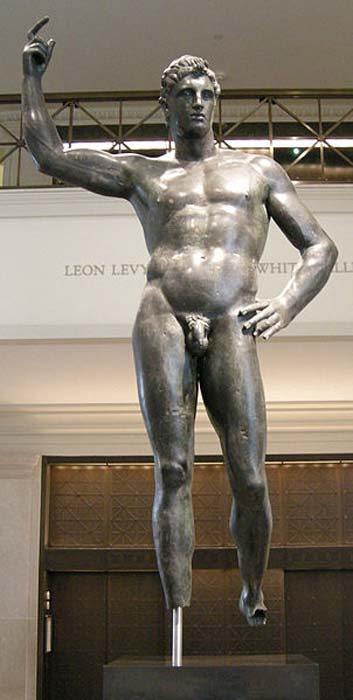
Bronze statue of a man . Mid-2nd-1st century BC. (Sailko/ CC BY SA 3.0 )
Setting the Norm
Like other Greek artistic innovations, the Greek preference for small but proportionate penises became the norm for artists for centuries to come. Unlike the Greeks, the Romans had a far more positive attitude toward large penises and enjoyed a rich, erotic culture (the hedonism of Romans is one of the several factors that is considered to have contributed to its downfall). Like many things Roman, their fondness for big penises may have contributed to today’s similar interest.
Nonetheless, when it came to high art, the Romans stuck with the Greek standard of the smaller penis. This practice was then adopted by the Christian artists of the Middle Ages, partly because they did everything as the Greeks/Romans had done, but also because the humble and supposedly less noticeable small penis worked for their portrayals of saints and biblical characters.
Finally, when the Renaissance occurred, small penises were the preferred stylistic standard, even if viewers and artists like Michelangelo did not recognize why.
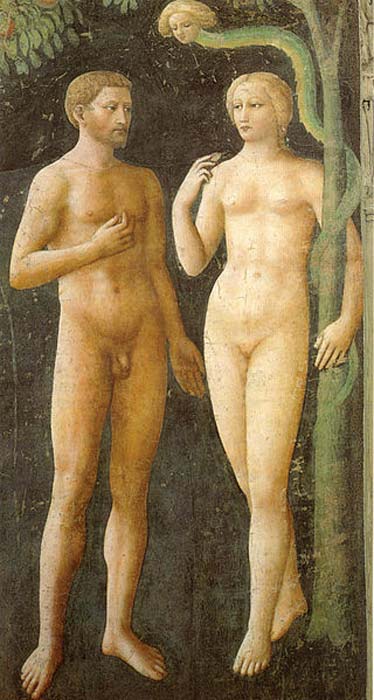
‘Adam and Eve’ (1425) fresco by Masolino da Panicale. ( Public Domain )
Today, the obsession with penis size is just as widespread as it was in classical times. The size preference is just reversed. Yet, this is not to say that one impression is more correct than the other. It is important to realize that there is “no clear evidence that a large penis correlates with sexual satisfaction. Nor is there proof that a small penis is a sign of moderation and rationality” (Goldhill, 2016).
Top Image: Theseus (center) invented wrestling Source: CC BY 2.5
Updated on November 19, 2020.
References
Admin. “Penis Size in Classical Art.” Penis Sizes . Penis Sizes, 25 Dec. 2016. Web. http://www.penissizes.org/penis-size-art
Goldhill, Olivia. “Why Do Greek Statues Have Such Small Penises?” Quartz. Quartz, 21 May 2016. Web. https://qz.com/689617/why-do-greek-statues-have-such-small-penises/
Hooper, John. “Was David Scared Stiff of Goliath?” The Age. The Age Company Ltd., 2005. Web. http://www.theage.com.au/news/Arts/Shrunken-vision/2005/01/22/1106334263269.html?oneclick=true
Oredsson, Ellen. “Why Do All Old Statues Have Such Small Penises?” How To Talk About Art History . How To Talk About Art History, 13 Aug. 2016. Web. http://www.howtotalkaboutarthistory.com/reader-questions/why-do-all-old-statues-have-such-small-penises/
Rempelakos, L., C. Tsiamis, and E. Poulakou-Rebelakou. “Penile Representations in Ancient Greek Art.” Arch Esp Urol 66.10 (2013): 911-16. Department of History of Medicine. Medical School. Athens University . National Center for Biotechnology Information, U.S. National Library of Medicine. Web. https://www.ncbi.nlm.nih.gov/pubmed/24369184
 RSS Feed
RSS Feed















 November 20th, 2020
November 20th, 2020  Awake Goy
Awake Goy  Posted in
Posted in  Tags:
Tags: 













